RG-VP WEB SOLUTIONS
First Floor, HIG B-14Housing Board Colony,
Trimurti Nagar,
Nagpur - 440022
Maharastra, INDIA
| Alignment (Proposed by DMRC) | Detail Route |
|---|---|
| Alignment-1 North-South Corridor (21.833 km, 17 stations) | Automotive Square, along Kamptee Road, Wardha Road, Variety Square to Abhyankar Road, along Nag River alignment will fall on Humpyard Road, Rahate Colony Road, Wardha Road, Khamla Road, Airport, MIHAN Area |
| Alignment-2 East – West Corridor (18.266 km, 19 stations) | From Prajapati Nagar, along Central Avenue Road, Railway Feeder Road, Munje Chowk, Jhansi Rani Chowk, North Ambajhari Road, Hingna Road, Lokmanya Nagar |
| Land Distribution | Area in Hectares (ha) |
|---|---|
| Total Project Area | 4025 ha. |
| Airport | 1200 ha. |
| Road & Rail Terminal | 200 ha. |
| Captive Power House | 52 ha. |
| IT Parks | 400 ha. |
| Health City | 60 ha. |
| Other Manufacturing & Value Added Units | 963 ha. |
| International School | 10 ha. |
| Residential, Open Spaces, Hotels, Roads, Interchange & RoB, Water Supply, Storm Water Drainage, Sewage System, Entertainment, Utility & Land for IAF (exchange) |
1140 ha. |
Nagpur is the winter capital of the state of Maharashtra, a fast growing metropolis and third largest city in Maharashtra after Mumbai and Pune. With a population of 2,405,421 (2011), Nagpur Metropolitan Area is the 13th largest urban conglomeration in India. It has also recently been ranked as the cleanest city and the second greenest city in India. In addition to being the seat of annual winter session of Maharashtra state assembly "Vidhan Sabha", Nagpur is also a major commercial and political center of the Vidarbha region of Maharashtra, and is also famous throughout the country as "Orange City" for being a major trade center of oranges that are cultivated in the region. In addition, the city also derives political importance from being the headquarters for the RSS and an important location for the Dalit Buddhist movement.
The city was founded by the Gonds but later became part of the Maratha Empire under the Bhonsles. The British East India Company took over Nagpur in the 19th century and made it the capital of the Central Provinces and Berar. After the first reorganization of states, the city lost its capital status but according to the "Nagpur Pact" between political leaders, it was made the second capital of Maharashtra. Nagpur is also called, "Tiger Capital of India " as it connects many Tiger Reserves in India to the world. It is among the important cities for IT sector in Maharashtra after Pune. Nagpur lies precisely at the center of the country with the Zero Mile Marker indicating the geographical center of India.
The Nag River, a tributary of the Kanhan River, flows in a serpentine path and is therefore named "Nag", the Marathi word for snake. And hence, the river and city named as Nagpur. While others say that the river flows through the old city of Nagpur and hence the city is named after this river. "Pur" is a common suffix given to cities, villages, and towns across India, and is often simply translated "city" The seal of Nagpur Municipal Corporation depicts a cobra in the water of a river.
Human existence around present-day Nagpur city can be traced back 3000 years to 8th century BC. Mehir burial sites at Drugdhamna (near Mhada colony) indicate megalithic culture existed around Nagpur and is still followed in present times. The first reference to the name Nagpur is found in a 10th century copper-plate inscription discovered at Devali in the neighbouring Wardha district. The inscription is a record of the grant of a village situated in the Visaya (district) of Nagpur-Nandivardhana during the time of Rastrakuta king Krsna III in the Saka year 862 (940 CE). Towards the end of third century King Vakataka dynasty, Vindhyasakti is known to have ruled the Nagpur region. In the 4th century Vakataka Dynasty ruled over the Nagpur region and surrounding areas and had good relations with the Gupta Empire. The Vakataka king Prithvisena I moved his capital to Nagardhan (ancient name Nandivardhana), located at 28 kilometres (17 mi) from Nagpur. After the Vakatakas, the region came under the rule of the Hindu kingdoms of the Badami Chalukyas, the Rashtrakutas, and finally the Yadavas. In AD 1296 Allauddin Khilji invaded the Yadava Kingdom after capturing Deogiri, after which the Tughlaq Dynasty came to power in 1317. In the 17th century, the Mughal Empire conquered the region. However, regional administration was carried out by the Gond kingdom of Deogarh-Nagpur in the Chhindwara district of the modern-day state of Madhya Pradesh.
Recent history ascribes the founding of Nagpur to Bakht Buland, a prince of the kingdom of Deogarh-Nagpur. The next Raja of Deogarh was Chand Sultan, who resided principally in the country below the hills, fixing his capital at Nagpur which he made a walled town. On Chand Sultan's death in 1739, Wali Shah, an illegitimate son of Bakht Buland, usurped the throne and Chand Sultan's widow invoked the aid of the Maratha leader Raghuji Bhonsle of Berar in the interest of her sons Akbar Shah and Burhan Shah. The usurper was put to death and the rightful heirs placed on the throne. After 1743, a series of Maratha rulers came to power, starting with Raghoji Bhonsle, who conquered the territories of Deogarh, Chanda, and Chhattisgarh by 1751.
In 1803 Raghoji II joined the Peshwa against the British in the Second Anglo-Maratha War, but the British prevailed. After Raghoji II's death in 1816, his son Parsaji was deposed and murdered by Mudhoji II. Despite the fact that he had entered into a treaty with the British in the same year, Mudhoji joined the Peshwa in the Third Anglo-Maratha War in 1817 against the British but suffered a defeat at Sitabuldi in present-day Nagpur city. The fierce battle was a turning point as it laid the foundations of the downfall of the Bhonsles and paved the way for the British acquisition of Nagpur city. Mudhoji was deposed after a temporary restoration to the throne, after which the British placed Raghoji III the grandchild of Raghoji II, on the throne. During the rule of Raghoji III (which lasted till 1840), the region was administered by a British resident. In 1853, the British took control of Nagpur after Raghoji III died without leaving an heir.
From 1853 to 1861, the Nagpur Province (which consisted of the present Nagpur region, Chhindwara, and Chhatisgarh) became part of the Central Provinces and Berar and came under the administration of a commissioner under the British central government, with Nagpur as its capital. Berar was added in 1903. Tata group started the country's first textile mill at Nagpur, formally known as Central India Spinning and Weaving Company Ltd. The company was popularly known as "Empress Mills" as it was inaugurated on 1 January 1877, the day Queen Victoria was proclaimed Empress of India.
The Non-cooperation movement was launched in the Nagpur session of 1920. After Indian Independence in 1947, Central Provinces and Berar became a province of India, and in 1950 became the Indian state of Madhya Pradesh, again with Nagpur as its capital. However, when the Indian states were reorganized along the linguistic lines in 1956, Nagpur and Berar regions were transferred to Bombay state, which in 1960 was split between the states of Maharashtra and Gujarat.
At a formal public ceremony on 14 October, 1956 in Nagpur B. R. Ambedkar along with his supporters converted to Buddhism starting Dalit Buddhist movement which is still active. Nagpur is a city with great capabilities to grow and prosper in the coming days. It is very important for State and Central Governments to contribute to the growth, development, prosperity of Nagpur. Nagpur completed 300 years of establishment in the year 2002. A big celebration was organized to mark the event.
Nagpur Junction Railway Station : is one of the oldest and busiest stations in Maharashtra.
In 1867, Mumbai was connected to Nagpur. In 1881, Nagpur was connected to Kolkata via the Nagpur State Railway of Chhattisgarh. It was officially inaugurated on January 15th, 1925 by the then Governor Sir Frank Sly. Prior to 1924, the Nagpur Railway Junction Station was located east of its current location.
Services: Nagpur Junction Railway Station receives two hundred and twenty-eight trains, with approximately 160,000 passengers embarking and disembarking daily.
Connectivity: Nagpur was once the state capital of the former Central Provinces, now part of present day Maharashtra. Nagpur Junction Railway Station has now become a major tourist destination. Direct trains run from Nagpur Junction Railway Station to all major metropolitan cities, including: New Delhi, Kolkata, Chennai, and Mumbai. Development.
In 2008, Nagpur Junction Railway Station was among 22 railway stations in India recommended to be upgraded to meet international standards. Priority areas were identified: security, safety, and cleanliness. Work is to be undertaken via Public-Private Partnerships and the Central Railway. The proximate Ajni railway station and Itwari railway station are planned to become a terminus, and a plan of eventually diverting traffic from the Nagpur Junction Railway Station is under consideration. A proposal for the development of Ajni Railway Station as a bus depot, is underway.
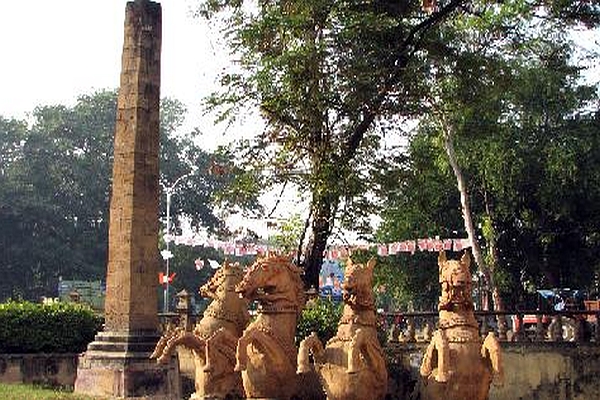
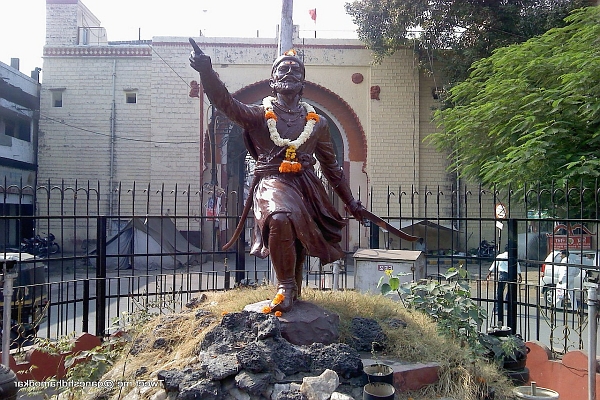 Mahal:Mahal is the oldest part of Nagpur, located on the banks of Nag river.
Raja Bakht Buland Shah established Nagpur here in 17th century.
The Motha Rajwada, residence of the Bhonsle royal family, is located in Mahal (Hence the name Mahal).
There are many historic temples in Mahal area such as the Kalyaneshwar Mandir, Pataleshwar Mandir, Aychit Mandir and Kashibai Mandir. Kashibai Mandir (after Queen Kashibai) is a 260-year-old Bhonsale family's Raj Ghat (burial place).
Historic mosques such as Shahi Masjid, Pattharphod Masjid, Kala Patthar Masjid are located here. Shahi Masjid, built by Raja Bakht Buland Shah is the first mosque built in Nagpur.
The headquarters of the Rashtriya Swayamsevak Sangh are also located here.
Many Marathi Wadas (old houses) are located here.
Mahal:Mahal is the oldest part of Nagpur, located on the banks of Nag river.
Raja Bakht Buland Shah established Nagpur here in 17th century.
The Motha Rajwada, residence of the Bhonsle royal family, is located in Mahal (Hence the name Mahal).
There are many historic temples in Mahal area such as the Kalyaneshwar Mandir, Pataleshwar Mandir, Aychit Mandir and Kashibai Mandir. Kashibai Mandir (after Queen Kashibai) is a 260-year-old Bhonsale family's Raj Ghat (burial place).
Historic mosques such as Shahi Masjid, Pattharphod Masjid, Kala Patthar Masjid are located here. Shahi Masjid, built by Raja Bakht Buland Shah is the first mosque built in Nagpur.
The headquarters of the Rashtriya Swayamsevak Sangh are also located here.
Many Marathi Wadas (old houses) are located here.
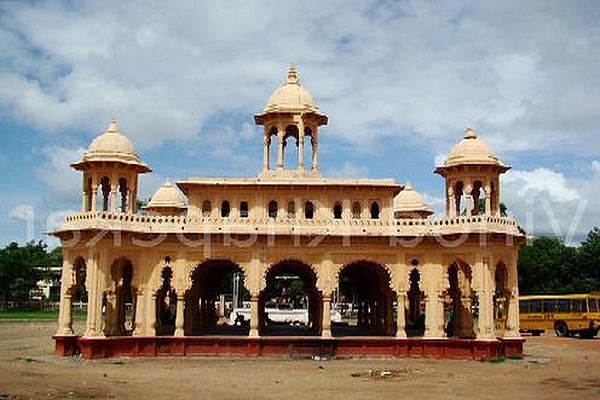
The English rulers considered Nagpur as the centre of India and hence identified this point and constructed the Zero Mile Stone. Being at the center of the country, they also had a plan to make Nagpur the second capital city.
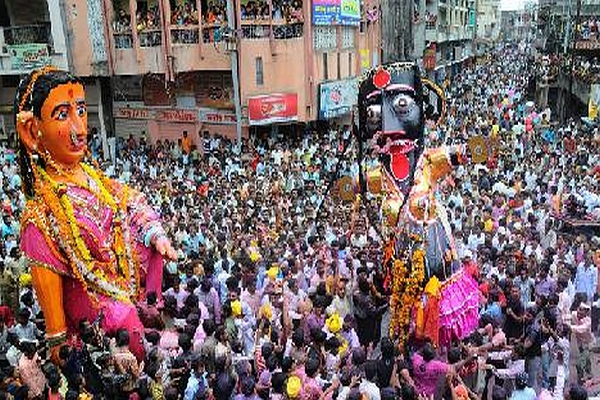
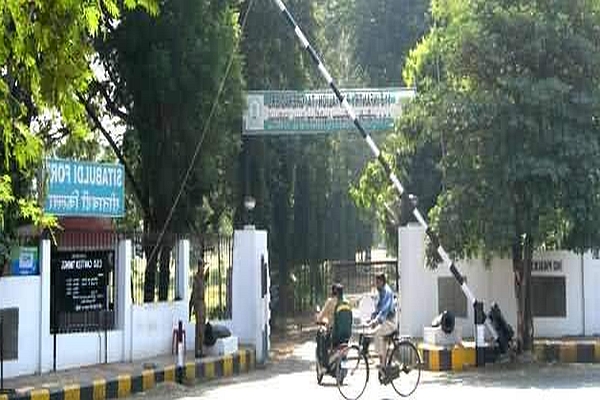 Sitabuldi Fort : Sitabuldi Fort in Nagpur Sitabuldi fort, site of the 1817 Battle of Sitabuldi, is located atop a small hillock in the middle of Nagpur. The fort was built by Appa Sahib or Mudhoji II Bhonsle of the Kingdom of Nagpur, just before he fought against the British East India Company during the Third Anglo-Maratha War. The area surrounding the hillock is now known as Sitabuldi and is an important commercial hub for Nagpur.
Sitabuldi Fort : Sitabuldi Fort in Nagpur Sitabuldi fort, site of the 1817 Battle of Sitabuldi, is located atop a small hillock in the middle of Nagpur. The fort was built by Appa Sahib or Mudhoji II Bhonsle of the Kingdom of Nagpur, just before he fought against the British East India Company during the Third Anglo-Maratha War. The area surrounding the hillock is now known as Sitabuldi and is an important commercial hub for Nagpur.
Inside the fort one can find graves of numerous British soldiers and a cell where Mahatma Gandhi was imprisoned. At present, Sitabuldi fort is the home to the office of the territorial army. The fort opens to the general public only on two national holidays- 26th January and 15th August.
The nearby attractions here are the temple of Ganesha (Tekdi Ganapati) at the back of the hillock, ancient temples of Lord Shiva and Vishnu, squash court, indoor swimming pool and the mausoleum of Nawab Kadar Ali (the great grandson of Tipu Sultan) near the eastern boundary wall of the fort.
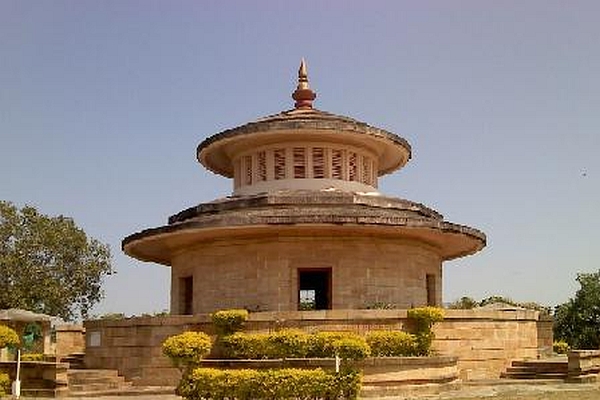
During Kalidas festival, celebrities of music, dance and drama gathered here to perform their talent. The festival brings back memories of the golden period of the Vidarbha region. People from different parts of India come here to attend the festival with full enthusiasm
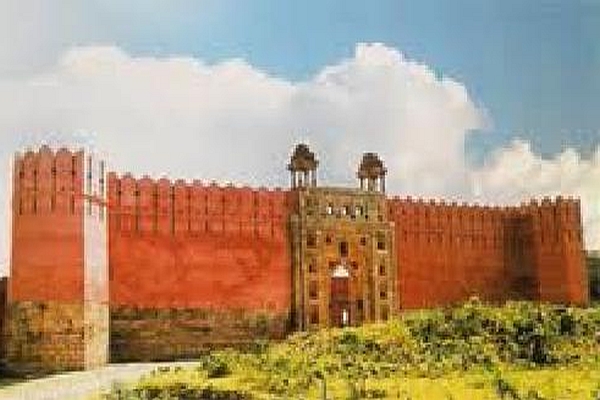
Inside the fort, nearby the palace there is a well which has two levels underground for people to stay with proper rooms. It also houses an idol of goddess Durga.
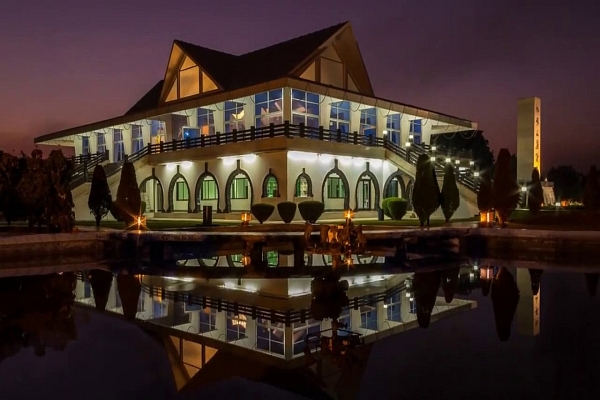 The Dragon Palace Temple: is the Buddhist temple dedicated to Lord Buddha. is located in Kamptee, a satellite township of Nagpur district. Located at a distance of 20kms north-east of Nagpur, Dragon Palace sprawl over an area of 10 acres of land is a unique temple with striking architecture. The temple was established on 23rd November 1999 by Mother Noriko Ogawa Society of Japan, in association with Ms Sulekha Kumbhare, the MLA and Minister of State of Water and Sanitation. Renowned as the 'Lotus Temple of Nagpur', the Dragon Palace Temple is surrounded by lush green landscaped gardens dotted with flowering plants. The characteristics architecture of Dragon Palace Temple has won the 'International Award' for the best-solidified construction of the world.
The bright white walls of Dragon Palace Temple symbolises calm, clarity and divinity. A huge statue of Lord Buddha, carved out of a single block of sandalwood is installed on the first floor of the meditation hall. During the meditation hours, all the devotees who assemble in the temple chant 'Nangu-Mayo-Ho-Renge-Kyo'. The temple is an ideal place for those who are looking for some peace and want to de-stress yourself. The Dragon Palace Temple is open to the public throughout the year and the best time to visit the temple is between November and February.
The Dragon Palace Temple: is the Buddhist temple dedicated to Lord Buddha. is located in Kamptee, a satellite township of Nagpur district. Located at a distance of 20kms north-east of Nagpur, Dragon Palace sprawl over an area of 10 acres of land is a unique temple with striking architecture. The temple was established on 23rd November 1999 by Mother Noriko Ogawa Society of Japan, in association with Ms Sulekha Kumbhare, the MLA and Minister of State of Water and Sanitation. Renowned as the 'Lotus Temple of Nagpur', the Dragon Palace Temple is surrounded by lush green landscaped gardens dotted with flowering plants. The characteristics architecture of Dragon Palace Temple has won the 'International Award' for the best-solidified construction of the world.
The bright white walls of Dragon Palace Temple symbolises calm, clarity and divinity. A huge statue of Lord Buddha, carved out of a single block of sandalwood is installed on the first floor of the meditation hall. During the meditation hours, all the devotees who assemble in the temple chant 'Nangu-Mayo-Ho-Renge-Kyo'. The temple is an ideal place for those who are looking for some peace and want to de-stress yourself. The Dragon Palace Temple is open to the public throughout the year and the best time to visit the temple is between November and February.
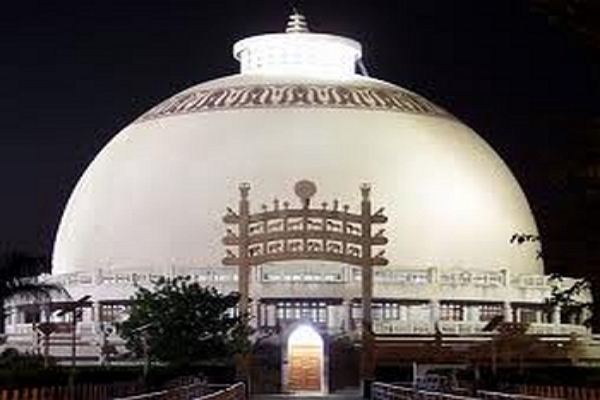 Deekshabhoomi: is a sacred monument of Buddhism located where the architect of the Indian Constitution, B. R. Ambedkar, converted to Buddhism with approximately 600,000 followers on Ashok Vijaya Dashami on 14 October 1956. Ambedkar's conversion to Buddhism is deeply significant for millions of people in India.
Deekshabhoomi is in Nagpur, Maharashtra, a location regarded as a pilgrimage center of Buddhism in India. Millions of pilgrims visit Deekshabhoomi every year, especially on Dhamma Chakra Pravartan Din ("Mass Conversion Ceremony Day") and 14 October, the memorial day when Ambedkar converted to Buddhism here. His final religious act was to embrace Buddhism. Today, the largest stupa in Asia is erected in his memory at the site.
Deeksha literally means 'act of ordaining' and bhoomi means the 'ground'. Deekshabhoomi means the ground where people got ordained as Buddhist. This religious mass conversion at one place was the first ever of its kind in history. Deekshabhoomi is one of two places of considered to be of great importance in the life of Ambedkar, the other being Chaitya Bhoomi in Mumbai.
Deekshabhoomi: is a sacred monument of Buddhism located where the architect of the Indian Constitution, B. R. Ambedkar, converted to Buddhism with approximately 600,000 followers on Ashok Vijaya Dashami on 14 October 1956. Ambedkar's conversion to Buddhism is deeply significant for millions of people in India.
Deekshabhoomi is in Nagpur, Maharashtra, a location regarded as a pilgrimage center of Buddhism in India. Millions of pilgrims visit Deekshabhoomi every year, especially on Dhamma Chakra Pravartan Din ("Mass Conversion Ceremony Day") and 14 October, the memorial day when Ambedkar converted to Buddhism here. His final religious act was to embrace Buddhism. Today, the largest stupa in Asia is erected in his memory at the site.
Deeksha literally means 'act of ordaining' and bhoomi means the 'ground'. Deekshabhoomi means the ground where people got ordained as Buddhist. This religious mass conversion at one place was the first ever of its kind in history. Deekshabhoomi is one of two places of considered to be of great importance in the life of Ambedkar, the other being Chaitya Bhoomi in Mumbai.
Clients
Core Team
Products

RG-VP WEB SOLUTIONS
First Floor, HIG B-14
+91 95954 77122
+91 98225 78823
Monday to Saturday
rgvpgreetsyou@rgvp.in
we reply quickly

